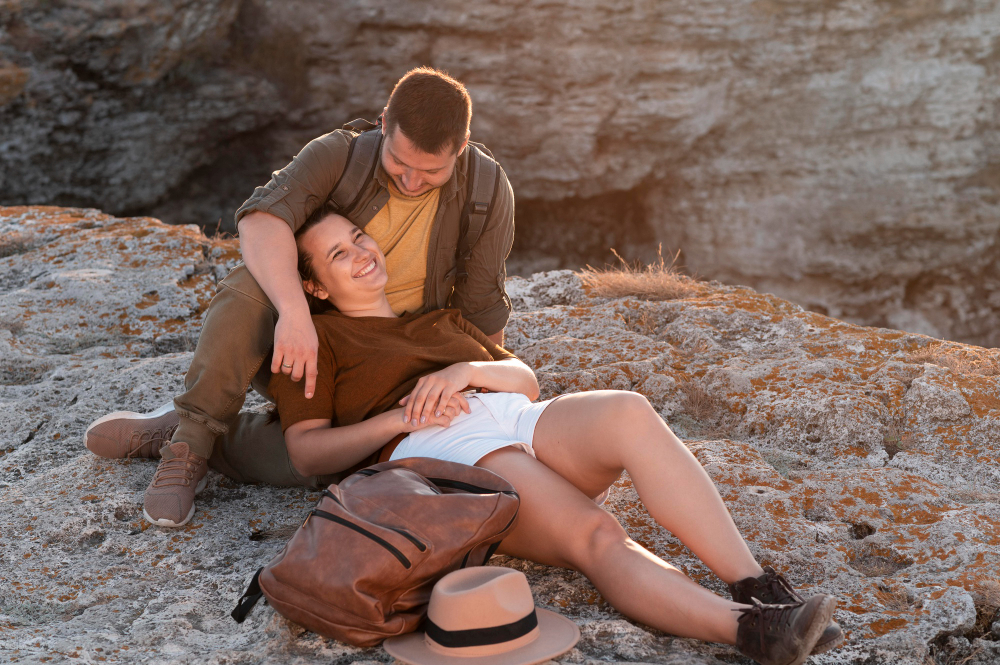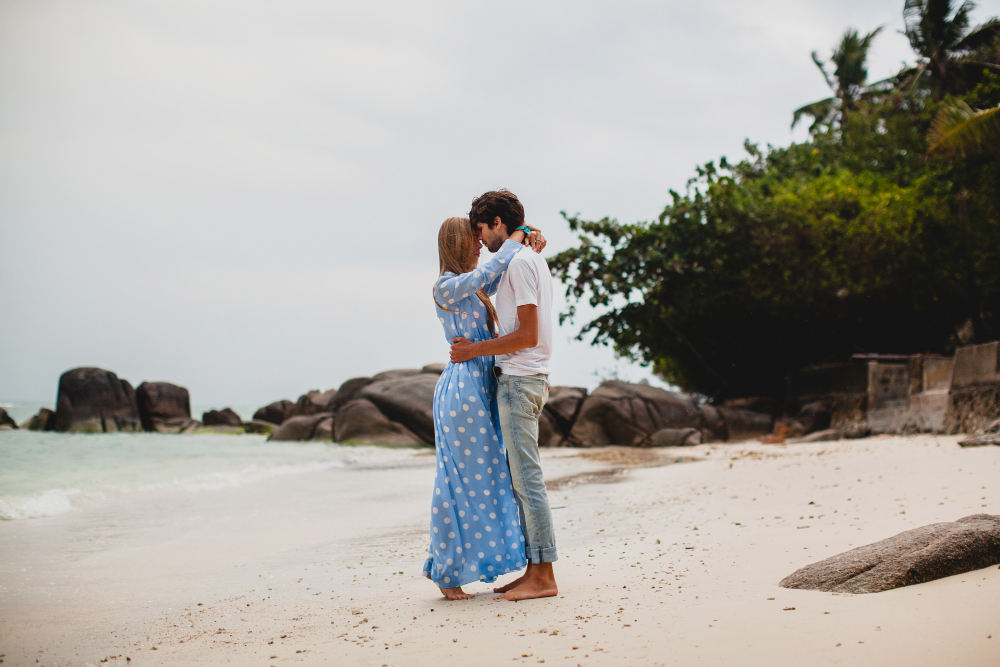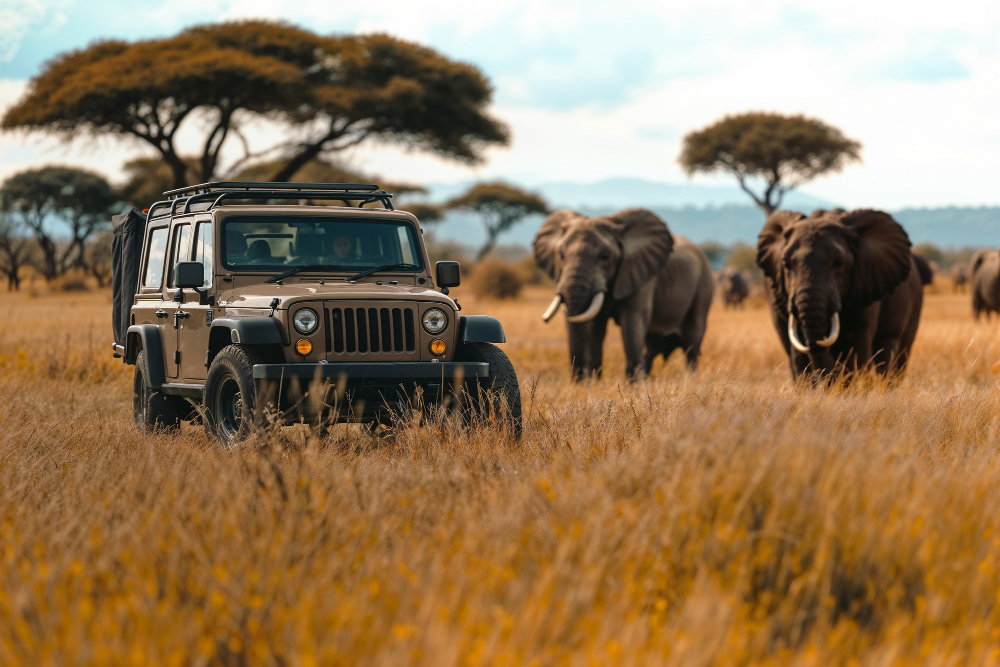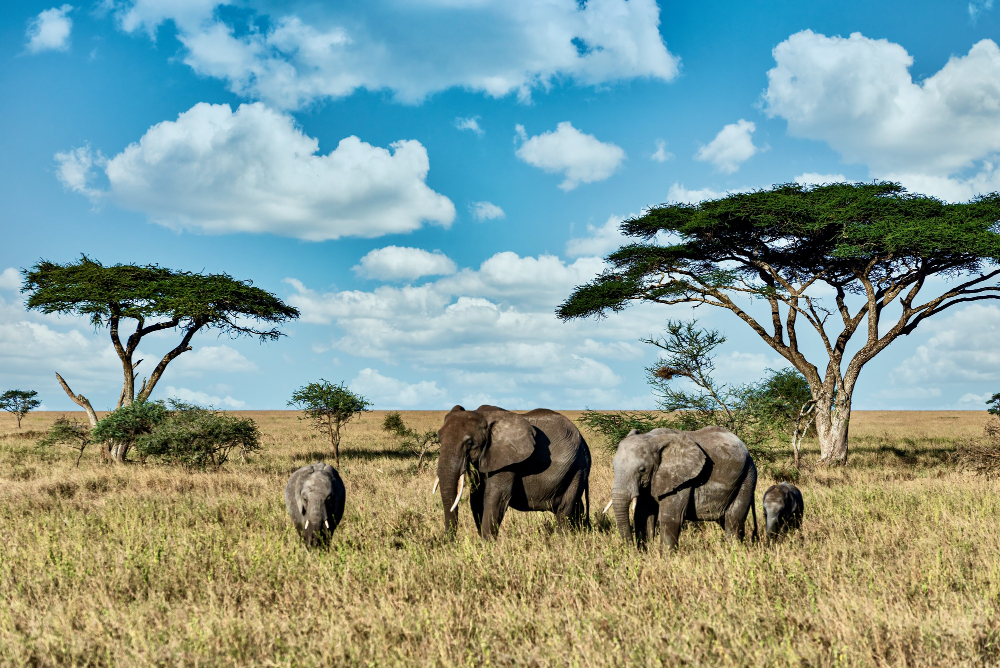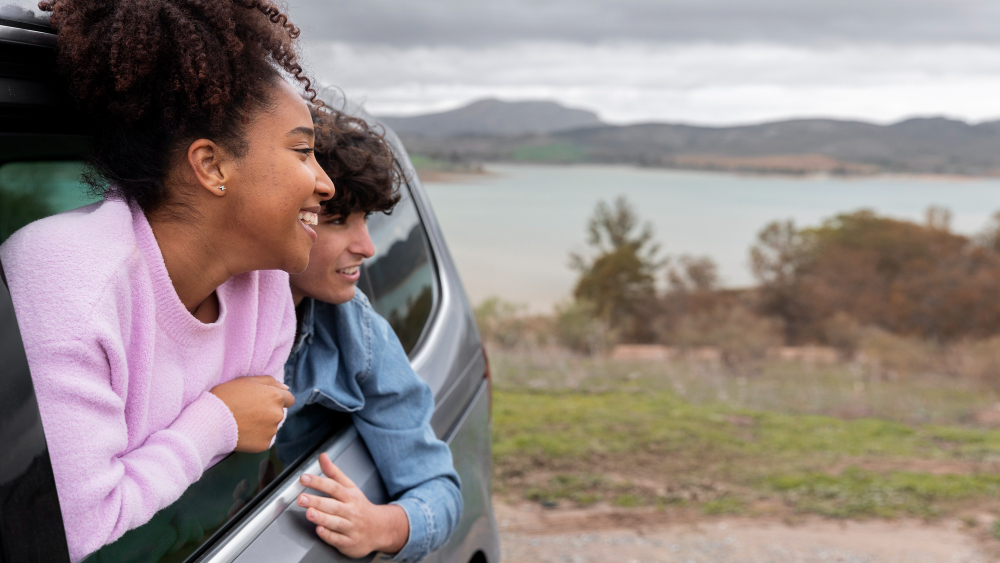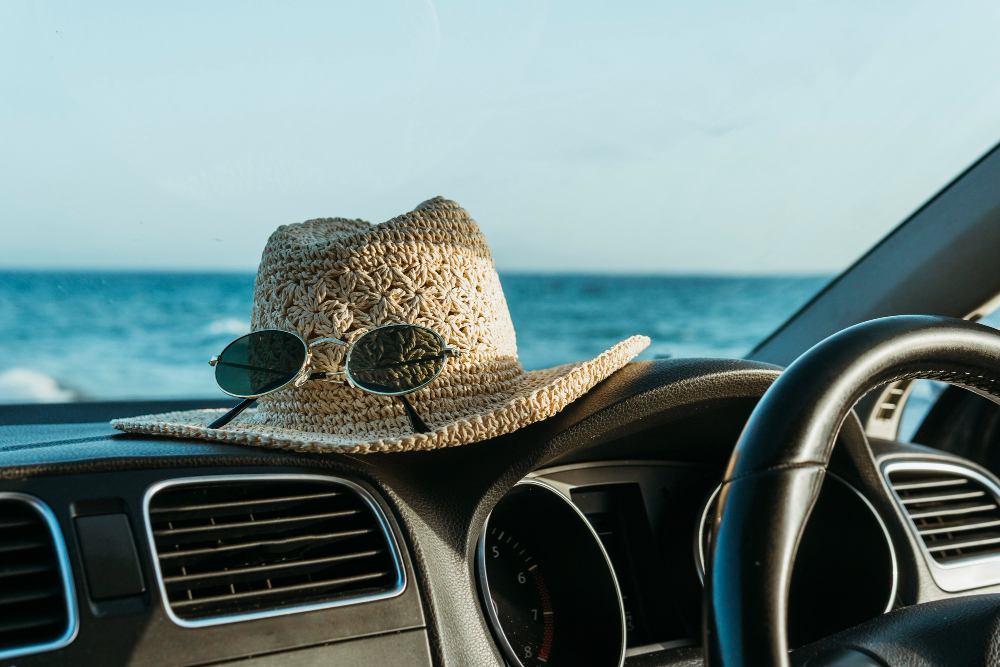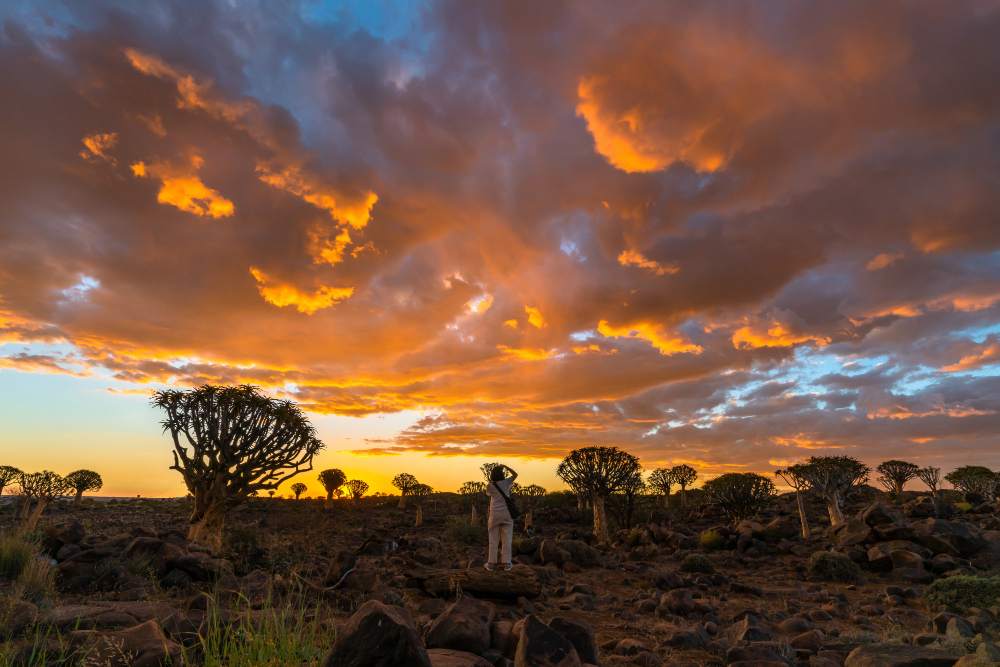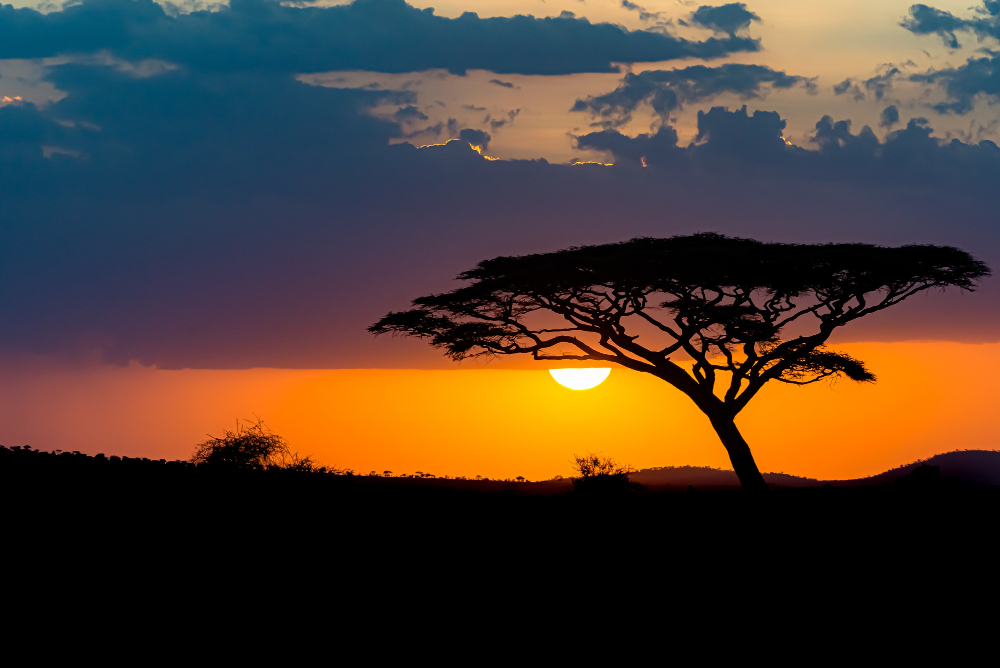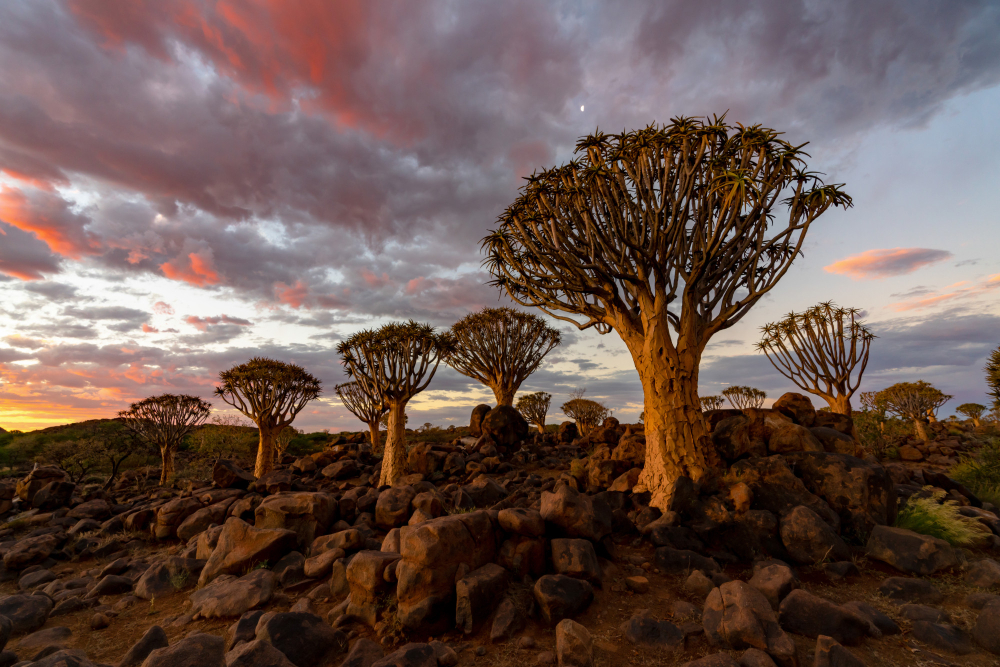Tanzania and Zanzibar, two of my favorite safari destinations in Africa, offer newlyweds the best Tanzania Honeymoon experience they won’t soon forget with their world-class safaris, white sand beaches, and romantic hideaways.
This place has everything you need for the ideal honeymoon, whether relaxing on Zanzibar’s immaculate beaches, seeing lions, leopards, and cheetahs in the Serengeti, or having a private supper outside.
With some of the greatest national parks in the world and some of the most amazing animal experiences, Tanzania is one of the most well-liked safari destinations. The Serengeti National Park is my favorite place in Tanzania, and the enchanted and distinctive Ngorongoro Crater is not far behind.
Honeymoon Itinerary Overview
Day by Day breakdown
- Day 1: Arusha
- Day 2: Tarangire National Park
- Day 3: Masai, Hadzabe and Datonga Tribes
- Day 4: Ngorongoro Crater
- Day 5: Central Serengeti
- Day 6: Northern Serengeti
- Day 7 – 10: Zanzibar
Final Thoughts
Is a Safari Good for a Honeymoon?
Yes, in my opinion, a safari is a fantastic and well-liked honeymoon destination. It enables you to make lifelong memories and share amazing adventures with your significant other.
The most memorable experience for newlyweds can be spending their honeymoon on a safari, surrounded by breathtaking views of plains, hills, and wildlife-rich woods.
Safari lodges throughout the continent provide a variety of romantic activities to take in Africa’s splendor on your special occasion, from intimate hideaways and treehouses reminiscent of Tarzan to opulent resorts.
Although early morning and late afternoon game drives are the primary focus of safaris, there are many more methods to see the animals. After enjoying a champagne brunch beneath an acacia tree, you can take a helicopter or hot-air balloon flight and see the wildlife below as the wind gently lifts you above the savannahs.
A sunset cruise or canoe journey over lakes or across crystal-clear canals while watching the game along the coastline are other options. You might also go on foot, horseback, or bicycle across the plains.
You could even mix these daring pursuits with something more peaceful, like lounging by your private pool and enjoying the sun.
A quiet candlelit meal, someplace in the wild beneath the starry African night sky, with only the sounds of nature in the background, followed by a glass of wine with your significant other as you watch the blood-red sun set across the plains, is the perfect way to cap off each day.
A safari destination is undoubtedly ideal for a honeymoon if you let your creativity run wild.
Is Tanzania Good For Safari Honeymoon?
Compared to other possibilities, which we will discuss in a moment, Tanzania is a terrific safari honeymoon destination and may be the finest option overall.
Tanzania naturally ranks among the most romantic and sought-after safari honeymoon destinations because it boasts some of the continent’s most breathtaking scenery, wildlife-rich game reserves, and the tropical island of Zanzibar.
The well-known Serengeti National Park, which is renowned for housing all five of the Big Five and a high density of big cats, would rank first on the list. It is especially well-known for hosting one of the most stunning natural occurrences in the world, the Great Wildebeest Migration. Every year, millions of wildebeests and zebras migrate there.
The Tarangire, Lake Manyara, and Ruaha National Parks are just a few of Tanzania’s many game reserves and national parks, each having its unique charms, natural beauty, and wildlife concentration.
But none is as unusual and intriguing as the Ngorongoro Crater, which has the appearance of a forgotten world. The crater is a UNESCO World Heritage site and is referred to as Africa’s own “Garden of Eden.”
The tallest mountain in Africa, the snow-capped Kilimanjaro, is located in Tanzania. It rises sharply over the surrounding coffee plantations, extensive national park, and lush rainforest.
You can reach the beautiful white sand beaches of the Zanzibar Islands, which are surrounded by tall, swaying coconut trees, resorts, bars, and restaurants on one side, and the enticing, glittering turquoise seas of the Indian Ocean on the other, after your safari with a quick 2-hour domestic flight. Sharing such beauty with your loved one during this special moment in your lives is the best way to appreciate it.
Which African Country is Best for a honeymoon?
To assist you in determining whether Tanzania is the ideal location for your honeymoon in Africa, I’ve included a comparison of Tanzania with two of the other most well-liked safari honeymoon spots below.
Tanzania Honeymoon Vs Kenya Honeymoon
Both Kenya and Tanzania are beautiful honeymoon spots that provide a beach and safari experience without having to travel outside of their borders. We’ll discuss some of the most significant distinctions below.
Tanzania Vs Kenya For Safari
Both of these nations include well-known safari parks that are ideal for a romantic honeymoon.
Both Kenya’s Maasai Mara National Reserve and Tanzania’s premier wildlife reserve, the Serengeti, provide breathtaking vistas of the crossings of the Mara River during the Great Wildebeest Migration.
Big cat densities in both parks are among the highest in Africa. Tanzania is a more popular option because the Great Migration can be observed over a longer period in the Serengeti.
The Masai Mara can grow far more crowded than the Serengeti during peak seasons because it is smaller, and the Serengeti is more than eight times larger. However, by visiting the nearby conservancies, you can avoid the crowds in the main Masai Mara Reserve. The cost of lodging in the conservancies is generally much higher.
In terms of accessibility and convenience, Tanzania’s main parks on the northern circuit are closer together and simpler to go to than those in Kenya. You may see the majority of Tanzania’s top parks in less time, thanks to this, which is a huge benefit.
Kenya’s parks are amazing, but none of them is equal in terms of their distinctiveness and enchantment to the most romantic spot.
Tanzania Vs Kenya for beaches
Although both provide fantastic beach and woodland retreats, Kenya’s beach resorts are only found on the continent of Africa. On the other hand, Tanzania is home to the breathtaking Zanzibar Islands, which provide a more romantic atmosphere and a wider variety of activities.
Both locations offer stunning beaches, lodging, culinary options, a vibrant nightlife, and water sports including windsurfing, swimming, snorkeling, and kayaking. But Zanzibar boasts the historic Stone Town, which is the ideal location for a romantic promenade because it is full of charming stores, markets, restaurants, and historical sites.
From the most opulent to the most basic lodging alternatives, Zanzibar is conveniently accessible by boat or airplane. Every evening, the shorelines that face north and west offer genuinely romantic sunsets.
Kenya’s most well-known beach resorts are located in two locations, aside from Mombasa and the surrounding districts: Malindi, which is roughly 80 miles (100 km) north of the port city, and Diani Beach, which is a short drive south of Mombasa. With miles of white sand beaches that are perfect for water sports, Diani Beach is a popular honeymoon spot. It also has first-rate resorts, restaurants, and beach bars.
Tanzania, however, becomes a more desirable combination of safari and beach honeymoon location when you take into account the quantity of excellent beaches on Zanzibar and the far longer mainland coastline.
Tanzania Vs Kenya Cost.
A private safari in Tanzania starts at $350 per person per day, which is a little more expensive than in Kenya ($300).
Kenya used to be significantly less expensive, but now that daily admission rates to the Maasai Mara have been raised to over three times those of Tanzania’s Serengeti, there isn’t much there.
Compared to Tanzania’s enormous Serengeti, which necessitates lodging inside the park, Kenya offers slightly less expensive lodging because it allows you to remain just outside the Masai Mara, saving money on overnight fees.
Tanzania was the overall winner.
Due to its amazing Zanzibar Island and world-class national parks that are conveniently accessible via its Northern Safari Circuit, Tanzania narrowly defeats Kenya for a safari and beach honeymoon.
Compared to Kenya’s smaller Masai Mara, Tanzania’s Serengeti is less congested during the busiest time of year because of its size.
Given that Tanzania and Kenya are adjacent, it is also feasible to combine both visits into a 10-day honeymoon safari itinerary.
Tanzania Honeymoon Vs Botswana Honeymoon
A safari haven, Botswana is known for Africa’s most pristine wilderness and luxurious game lodges.
Does Botswana make a better honeymoon vacation, given that safaris are not inexpensive and that it is the most costly and exclusive safari destination? Let’s investigate below.
Tanzania Vs Botswana for Safari
Most parks in Botswana have tourist limits, which prevent crowding and guarantee a more intimate, genuine safari experience.
The primarily upscale lodges provide opulent amenities, a wide range of safari activities, and services tucked away in the bush, distant from tourists, making for an intimate setting that is ideal for a romantic retreat.
Additionally, Botswana boasts a wide variety of fauna. In addition to rare and endangered species like African wild dogs, this area is home to the Big Five and other renowned wildlife. Botswana has the highest number of elephants in the world and a healthy predator population, but it cannot equal Tanzania’s big cat density.
Although Botswana has its mini-migration consisting primarily of 30,000 zebras, it is insignificant in comparison to Tanzania’s Great Wildebeest Migration, in which over two million animals travel 800 miles (1,000 km) year-round.
Despite the often great distances between them, Botswana does provide a wider variety of scenery than Tanzania. The top Okavango Delta parks, such as the internationally recognized Moremi Game Reserve and Chobe National Park, which is home to the well-known Savuti Channel, are located to the north.
Large savannahs, copious woods, and thousands of miles of stunning rivers, lakes, and lagoons make up these enormous parks.
The temperature and environment significantly alter south of Botswana, where ancient, enormous baobab trees are scattered across flat, dry salt pans. The place becomes an evergreen sanctuary when it starts to rain. Despite appearing desolate during the dry months, it is teeming with species, including flamingos, meerkats, gemsbok, springbok, cheetahs, and Kalahari black-maned lions.
Tanzania vs Botswana for beaches.
Due to its landlocked status, Botswana is unable to provide both a safari and a beach honeymoon, unless you are prepared to take several pricey flights via South Africa to Mauritius or the Seychelles.
On the other hand, the Seronera or Kogatende airstrips in the Serengeti are only to one-hour direct flight from Tanzania’s Zanzibar Island. In the morning, you might be in the savannahs watching a pride of lions, and in the afternoon, you might be lounging on the white sand beaches of Zanzibar.
Tanzania vs Botswana cost
There is a cost associated with Botswana’s exclusivity and high-cost, minimal effect strategy. Given that Tanzania probably has the priciest safari resorts in Africa, Botswana finds it difficult to compete with them on price.
Budget safaris in Botswana start at $450 per adult per day, which is more than $350 in Tanzania. You will also be staying in a tent, which isn’t everyone’s ideal honeymoon accommodation.
Tanzania was the overall winner
Considering all of the aforementioned aspects, Tanzania is still a more sensible and reasonably priced safari honeymoon choice (at least when compared to Botswana), particularly when you include the charming island of Zanzibar off the coast of Tanzania’s mainland.
Tanzania Honeymoon Destinations
With the sea, mountains, and more than 20 top-notch national parks, you’ll be unsure of which to see and which to skip. I’ve compiled a list of must-see locations that will guarantee the most unforgettable safari honeymoon in Tanzania to make things easier.
The parks listed below were chosen for their convenience as well as their abundant wildlife and scenic beauty. Because of their proximity to one another, less needless travel time is required.
Since these parks make up Tanzania’s northern safari circuit (shown on the map below), they frequently appear together on safari itineraries, which gives Tanzania a significant advantage by allowing visitors to see them all in a single trip.
Serengeti National Park
Serengeti National Park, the world’s top safari destination for nature enthusiasts, is home to the Big Five, the Great Wildebeest Migration, and one of the planet’s most diverse concentrations of species.
Big cats are prevalent in the Central Serengeti (Seronera), which is characterized by expansive, level grassy savannas. The Grumeti River, which is home to some of the largest Nile crocodiles on the planet, presents the migrating herds with their first significant obstacle in the Western Corridor, which has richer vegetation. To the north, the terrain shifts to a mixture of hills, wide plains, and thick forests, home to almost all of Africa’s animals.
Millions of wildebeest, zebras, and antelopes attempt the notorious crossing of the crocodile-infested Mara River to reach the verdant plains of the Maasai Mara in neighboring Kenya during the Great Migration’s most dramatic phase in the Northern Serengeti (Kogatende). This scene is repeated months later as the herds return through Serengeti National Park and the Maasai Mara, repeating their never-ending cycle of survival.
The Big Five—more than 4,000 lions, 1,000 leopards, 500 cheetahs, and 8,000 elephants—are all found in the Serengeti. Its amazing biodiversity is further enhanced by more bird species.
In order to create a wonderful safari experience throughout this unique environment, visitors can choose for game drives, hot-air balloon or helicopter excursions, and cultural visits to indigenous communities.
Ngorongoro Crater
Perhaps Africa’s most intriguing and distinctive safari reserve is Ngorongoro Crater. It is a component of the UNESCO-designated Ngorongoro Conservation Area.
A 2,000-foot (610-meter) high volcanic crater wall that is 12 miles (19 km) across completely encloses the small 100-square-mile (260 km2) park known as Ngorongoro, which is close to the Serengeti. Millions of birds and nearly 25,000 species, including the Big Five, inhabit this beautiful environment.
Because of its year-round water sources and sheer crater walls, Ngorongoro is a year-round safari attraction. The only species missing from Ngorongoro, along with crocodiles, are giraffes, which are sadly unable to access the crater due to the same walls.
There is an abundance of other wildlife, such as the endangered and rare black rhino. Large flamingo colonies and thousands of other aquatic birds can be found in the alkaline Lake Magadi, which is near the center of the crater and is populated by hippos.
There are about six lodges on the crater rim, even though lodging is not allowed inside the crater. A romantic and perfect safari honeymoon atmosphere is created by these lodges, which are comparatively pricey mid-range and luxury accommodations. They usually offer panoramic views of the crater floor (confirm your room has views when booking).
An hour’s drive away lies Karatu, which offers inexpensive lodging options.
Tarangire National Park
Another must-see safari honeymoon spot is Tarangire National Park, which is close to the Ngorongoro Crater.
This park is an absolute paradise for elephant lovers. Tarangire, which covers 1,100 square miles (2,850 km2), is home to more than 500 different kinds of birds and four of the Big Five (apart from rhinos).
Along with numerous smaller predators and herbivores, you’ll also discover cheetahs, hyenas, zebras, giraffes, wildebeest, eland, impala, hippos, and crocodiles. Tarangire is also home to rare and endangered species like the fringe-eared oryx.
But its elephants are the major draw; some of Africa’s largest herds, numbering up to 300 animals, make for a breathtaking sight in the wild.
Hat sets What sets Tarangire different is its breathtaking scenery, which includes towering granite formations, crimson soils, magnificent baobab trees, and lush green pastures. For animal photographers, this colorful and contrasting landscape offers a breathtaking backdrop. There are several lodging choices inside and close to the park, guaranteeing short transit times to popular game-viewing locations.
You will have seen some of the best wildlife encounters and romantic pursuits that Africa has to offer after touring these three famous parks.
Zanzibar Island
What better way to cap off a romantic honeymoon than spending a few days on Zanzibar’s white sand beaches after an exciting week of amazing wildlife encounters on safari? You might alternatively fly to Dar es Salaam and take a two-hour ferry to Zanzibar City and the ancient Stone Town, which is only a few hours’ drive from these wildlife parks. After that, pick a hotel or guesthouse, or travel to some of the best beaches and resorts in East Africa.
Because there aren’t many tidal fluctuations near the northern and west-facing tips of Zanzibar Island, swimming, snorkeling, and scuba diving are possible at any tide.
At low tide, the sea recedes more than a mile along the east-facing shoreline, which is subject to significant tidal fluctuations. The East Coast is home to some of the greatest hotels.
Zanzibar, sometimes called the Spice Islands, is the ideal destination for a genuinely romantic honeymoon conclusion because of its gorgeous beaches, pristine waters, breathtaking sunsets, mouthwatering seafood, and tranquil waterfront hotels.
Tanzania Safari and Beach Honeymoon
Few nations in the world offer the dual experiences of snorkeling in pristine waters teeming with colorful fish and coral reefs and watching untamed wildlife in the center of the African savannah. This is precisely what Tanzania provides.
After your once-in-a-lifetime safari in Tanzania’s world-class parks, put on flip-flops and shorts instead of hiking boots and binoculars and enjoy your days as you see fit, whether that means sleeping in, relaxing by the pool, sunbathing, or exploring exotic beaches. Swim, snorkel, windsurf, and stop at coastal bars for a cocktail.
Take a boat trip to one of the uninhabited islands close to Zanzibar, such as Prison Island, which is home to renowned tortoises, for an even more remote experience. Along with visiting historical sites and interacting with hospitable residents, you can also explore spice plantations and shop for fabrics, spices, and souvenirs along Stone Town’s winding streets. Take a sunset sail at the end of each day to see the sunset.
A honeymoon that combines bush and beach provides the ideal balance of romance, leisure, and adventure, making it a genuinely unique experience.
How to book your Tanzania Honeymoon Safari
Booking for your honeymoon safari in Tanzania through a local travel operator is unquestionably the most well-liked and straightforward option. I’ve always been really satisfied with the way I schedule all of my Tanzania safaris.
These kinds of excursions are incredibly convenient since your tour operator will handle everything, from securing permits and lodgings to providing you with the most recent recommendations for the finest locations to visit based on wildlife observations.
Other safari options include fly-in to hotel safaris, which involve flying from lodge to lodge and offering wildlife drives at each one, and self-drive safaris. Of course, there are also package vacations, in which all the arrangements, including international flights, are handled by an international travel agency.
The choice you make will significantly affect both the cost of your honeymoon safari and the experience. I’ll list the benefits and drawbacks of each choice below.
Option 1: Self-Drive
Self-drive safaris offer several benefits, chief among them being the most economical option and the liberty and adaptability to travel to any location at any time.
It’s important to keep in mind that booking through a local tour operator with knowledgeable guides is usually significantly more affordable than going on a self-drive safari.
You must rent the right kind of vehicle that is allowed in the parks, purchase gas and insurance, drive through uncharted territory and uneven terrain with little signage, identify the animals you are likely to see at that time of day or year, spot your animals, and take care of yourself if you get stuck, have a flat tire, or break down in the middle of nowhere.
If a guide notices a warning sign, they can take the proper steps to avoid any potential risk because they are familiar with their region and the behavior of the wildlife.
These factors, along with my personal experiences, make me dislike self-driving safaris in Tanzania, where the goal is to see wildlife.
Option 2: Local Tour Operators
My favorite method of booking a safari is through local tour operators, who typically offer the finest safari experience and excellent pricing.
In addition to paying park fees, local safari businesses can handle your lodging, transportation, safaris, and food and drink arrangements while you’re on safari or traveling.
They can help with practically any problem because they are always on the ground and have a thorough awareness of what is going on in the parks. The nicest thing about making a reservation with them is that you will be fully aware of the charges up front, preventing unpleasant surprises when you get there or when your trip is coming to an end.
Knowledgeable guides who are skilled trackers, conversant with park road conditions, and in radio touch with other guides are employed by local tour operators. This enables them to show you uncommon occurrences that you might otherwise overlook.
Numerous companies provide private safaris where you may completely alter the schedule to meet your unique requirements.
Local operators are significantly less expensive than booking through international travel agencies, which frequently contract out many of the internal safari logistics to them and mark up the prices for a larger profit. This is because local operators have low overheads and small profit margins. Furthermore, you can feel good about helping regional businesses as opposed to big, global ones.
Having done a lot of travel in Tanzania and throughout Africa, I’ve discovered that local operators are the greatest, most economical, and most practical method to reserve a safari. They also take care of almost everything, which reduces stress.
Option 3: Hotel Safaris
If you intend to stay at one or two lodges for the duration of your safari, hotel-arranged safaris provide a certain amount of ease. However, they are typically the priciest safari travel option.
Furthermore, since you will usually be spending a lot of time at one or two lodges, it could be a little dangerous if the lodge turns out to be in a bad location for animals.
Typically, other lodge visitors will accompany you on your game drives. These safaris might also be less flexible than you might have hoped for your honeymoon, giving you less control over when to arrive and go, which sights to prioritize, and how long to spend at each location.
However, you might hire a local safari firm to plan a private safari for you. They would often reserve your lodge at a discounted rate as part of the safari package. Domestic flights to and from lodge airstrips can also be arranged by local businesses.
Option 4: International Travel Agents
Due to their own expense and profit margins, international travel agencies usually charge 30% or more than local safari firms. They can, however, arrange international flights and provide the ease of doing business with a domestic company.
Since the safaris are typically contracted out to a local safari firm, the actual safari experience will be comparable to one that is reserved directly with the local business.
While your overseas flights will be covered by the ATOL scheme, foreign travel agents usually give some protection if a company goes out of business. For example, in the UK, you will be covered by the Package Travel Regulations, which can be helpful.
The Federal Aviation Administration’s consumer protection regulations and the Airline Passenger Protection Act are two examples of American programs.
There are, however, precautions you can take to guard against these risks when making a direct reservation with a local tour operator. For example, using your credit card to pay the deposit provides a certain amount of purchase protection (known as Section 75 in the UK).
Additionally, you might buy quality travel insurance that includes features like trip interruption cover. To further reduce risk, if you choose to book through a local safari firm that you have been recommended, they will typically ask for a deposit and let you pay the remaining amount closer to the trip date.
Private vs Group Tanzania Honeymoon Safari
A private safari or a group safari are your two primary options. Below, we’ll examine the benefits and drawbacks of each.
Private Honeymoon Safari
Let’s be honest, the greatest option is a private honeymoon safari. When and where to travel on safari, what sights to see, and how long to spend at each sighting are all up to you. Everything is tailored to meet your requirements.
Because predators are most active around daybreak, private safaris allow you to enter the park early for the best viewing period because you don’t have to waste time picking up other group members.
Go ahead and spend the money if you can; after all, it’s your honeymoon.
Group or Shared Honeymoon Safari
However, group safaris or shared safaris are less expensive than private safaris, especially for single travelers (which, thankfully, isn’t you if you’re on your honeymoon!). They do have certain disadvantages, though.
First of all, they are rigid, running on predetermined routes and at certain times. This implies that you are powerless to decide whether to leave or return, which sightings to prioritize, and how long to spend at each sighting. You might not always get the greatest seat in a truck full of people, and occasionally, they put a third row of seats in the middle, which limits your perspective and makes the entire trip uncomfortable.
How much does a Honeymoon in Tanzania cost
You should budget about $350 per person per day for a low-cost private safari with a local operator. Luxury safaris can cost up to $650 per person per day, while mid-range safaris start at $450. These costs include lodging, meals, transportation to and from the airport, game drives, guides, fuel, and park admission. Visas, international travel, and gratuities are not covered.
Because expenses are split, group camping safaris are less expensive; they usually cost $250 per person per day.
When making a reservation through an international travel agency, prices are often 30% or more.
Tanzania Honeymoon Cost Breakdown
Accommodation and park admission fees, which differ depending on the park and your preferred degree of comfort, account for the majority of your safari expenses. For instance, daily admission to Tanzania’s most costly parks, the Serengeti and Ngorongoro Crater, is $70 + 18% tax, plus an extra $60 + 18% if you’re staying in a concession area. This raises the daily total for park fees to more than $153 per person. In addition, there is a daily vehicle fee at Ngorongoro Crater, which drives up prices to more than $250 per person per day when two persons share.
The cost of lodging can vary greatly based on the park and whether you choose to stay indoors or out. Although staying outside the park is typically less expensive, it is not advised for the Serengeti since the lengthy travel times may interfere with critical game-viewing time. Tarangire National Park and Ngorongoro Crater, where several lodges are situated close to the main gates, are best visited outside.
Budget lodges cost $50 per person per night, while luxury accommodations cost $1,000 or more. If it’s feasible, I would suggest at least some mid-range or luxury lodging for a honeymoon.
The cost of the vehicle and the driver/guide usually accounts for about sixteen percent of the overall cost of the safari.
Factors Affecting Tanzania Honeymoon Safari Cost
The price of your safari can vary depending on several things. The level of accommodation you choose is the most evident element. A cheap safari will be significantly less expensive than a deluxe one.
Another consideration is how you plan your safari; using a travel agency will cost more than using a local operator. There are also a few other things to think about.
How to Book you Safari
The most costly choice is to use an overseas travel agency or international safari firm, as they tack on their earnings to the cost of the local operators who often conduct the safari.
Dealing with a local safari firm is typically the most cost-effective option. All of my safari reservations are now made through reputable local tour companies.
Although DIY self-drive safaris are a little less expensive, you lose out on many animal encounters if you don’t have a guide. Although group safaris are less expensive, there are several trade-offs.
Accommodation
Comfort levels in accommodations vary widely. Mid-range safari lodgings cost $110 per night, while budget accommodations usually cost $80 per night. The daily cost of a luxury safari can surpass $350 per person. Top-tier boutique lodges can cost up to $3,000 per person per night for individuals looking for ultra-luxury accommodations.
Time of Year
Safari expenses are significantly influenced by the season. The busiest time of year is from June to mid-October, and the most costly months are July and August. The shoulder season runs from mid-October to February, and the low season runs from March to May.
You can save about 12–15% when you book during the shoulder season, and 20–30% when you book during the low season. The largest savings are typically found at premium lodging, while some lodges and tented camps may even provide reductions of up to 40% during the off-peak months.
Park Fees
Park entrance fees, which differ according to the park and season, make up around 30% of your total safari expenses. There are overnight expenses if you choose to remain in the park.
In 2025, admission to Serengeti Park will cost $70 plus 18% tax during the busiest months (16 May–14 March) and $60 plus 18% tax during the slowest months (15 March–15 May).
In 2025–2026, admission to Ngorongoro Park costs $60 per person, plus 18% tax, for both high and low seasons. The cost of a vehicle permit (2,000–3,000 kg) is $177, and each vehicle must pay an additional $295 to enter the crater. Prices are the same in both seasons.
In 2025, admission to Tarangire Park will cost $50 per person, plus 18% tax, during peak season and $45, plus 18% tax, during off-peak hours.
Mode of Transport on Game Drives
Based on a two-person group, your transportation and driver guide expenses account for about 20% of your overall safari expenses.
Usually, 4×4 safari trucks, such as customized Toyota Land Cruisers, are used for wildlife drives. The cost of a safari vehicle with a driver guide on a private safari is approximately $350 to $450 per day, which is split among the travelers.
To get even greater views of the animals, you can upgrade your car even further to a Land Cruiser that is ready for photography. These vehicles have wider windows that open all the way. To assist you in taking the greatest pictures, these cars frequently include beanbags as well.
Group Size
The number of your group has an impact on the price of your private safari. It works nicely for honeymoons with two passengers.
However, you should budget between $350 and $450 per day for the safari vehicle and driver guide if you are traveling alone. The cost decreases to $175 to $225 per person when two persons are involved. You will pay much less if there are three of you.
How You Get Around: Flying vs Driving
The cost of the safari as a whole also depends on the kind of transportation used to get between the parks and the airport.
There are two main options: driving or flying. Since you already have your safari car and driver’s guide, driving is far less expensive.
Small safari planes provide scheduled flights that cost about $350 per passenger each trip. For drives longer than five hours, I frequently opt to fly.
Best Time to go on Tanzania Honeymoon
Tanzania is regarded as a tourist location that is largely accessible throughout the year, but if you want to make the most of your honeymoon, you should make sure that the weather is ideal.
Tanzania is located slightly south of the equator; therefore, its seasons are determined by the beginning and end of the rainy season rather than temperature. Everything is impacted by these rains, including wildlife migrations, the Great Migration, the arrival and departure of tourists, and even prices.
Whether you’re on safari or on a beach holiday, the rains may affect your enjoyment.
There are two wet and two dry seasons in Tanzania: the short and long dry seasons, which are both popular travel times, and the short and long rainy seasons, which are the low seasons.
The long dry season, which usually lasts from June to September and may even last until mid-October, is the ideal time of year to go on a honeymoon in Tanzania.
How long to Spend in your Tanzania Honeymoon
To take advantage of everything Tanzania has to offer, a 10-day honeymoon plan is perfect. You can go straight to my agenda for my 10-day honeymoon.
In ten days, you may experience the Ngorongoro Crater and its breathtaking scenery, go on game drives in both the northern and central Serengeti, learn about the wildlife in Tarangire National Park, and then relax on Zanzibar’s magnificent beaches.
It’s the ideal balance of leisure and adventure, letting you enjoy the abundant wildlife, rich culture, and breathtaking natural beauty without feeling hurried.
Tanzania Safari Logistic
The majority of the logistics of your trip will be handled by your tour operator, but there are still a few things you must plan and know how to do. These could include prescription drugs, immunizations, and visas.
Visa
To enter Tanzania, visitors from the United Kingdom, the United States, Canada, Australia, and other European nations need a visa.
In order to avoid delays at the airports, it is advised to apply online in advance or upon arrival for a $50 single-entry visa. Since it takes several weeks to get approved, it is best to apply well in advance.
However, visitors from the United States must pay $100 for multi-entry visas. Typically, visas are good for 90 days.
Make sure your passport has at least two blank pages for stamps and is valid for at least six months after the date you plan to return it.
Vaccination
Although Tanzania has a low risk of yellow fever and no vaccination certificate is needed, you will need one if you are traveling from Kenya, which is a high-risk country, or if you have passed through an airport in a high-risk country.
It is strongly advised to go over the list of recommended vaccinations, even though none are required to enter Tanzania. Hepatitis A and B, diphtheria, meningitis, and typhoid are a few of the vaccinations you might need to think about.
Medication
Precautions must be taken because Tanzania is a high-risk malaria region, especially during the rainy seasons.
Strict precautions against mosquito bites, such as keeping enough insect repellent on hand and dressing appropriately, are advised, particularly in the morning and evening. I haven’t experienced any mosquito-related problems on the gaming drives.
Make sure you take enough medication, monitoring tools, and other dietary items you need with you if you have any allergies or long-term medical issues like diabetes. This is especially crucial when traveling to isolated locations, as is the situation in many Tanzanian safari parks, where it could take longer for medical help to reach
Carrying anti-diarrhea medications and a rehydration sachet is a good idea because food sickness is a constant worry when traveling. Nonetheless, the food in mid-range and luxury lodging can be outstanding, and tourist lodging typically has a high standard of food safety.
Although I’ve never experienced a stomach ache in Tanzania, you should exercise caution when attending buffets since they may pose a greater risk to those with sensitive stomachs. Buffets typically offer the choice of freshly prepared meals as well.
10- Day Tanzania Honeymoon Itinerary
After many trips to Tanzania and safaris in most of its game parks and reserves, I have put up what I think is the ideal 10-day safari honeymoon schedule.
You will have a memorable and romantic experience on this vacation, which will highlight Tanzania’s greatest attractions.
In addition to being incredibly gorgeous, the three most famous game parks I’ve chosen are home to some of the densest and greatest concentrations of animals on the globe. These parks were also picked because they are conveniently close to one another, which cuts down on the time and expense of traveling between them.
After seven captivating days of driving across the nation, you will first visit Tarangire National Park, then the nearby Ngorongoro Crater, and finally the renowned Serengeti National Park.
You will depart the dusty trails of the Serengeti and travel straight to the beautiful island of Zanzibar after seeing some of the most breathtaking landscapes, recognizable wildlife, and intriguing tribes on earth.
There, amid tall palm trees, white sand beaches, and the enticing turquoise seas of the Indian Ocean, you will spend the final three days of your honeymoon unwinding at your leisure.
Day by Day Breakdown of 10- Day Tanzania Honeymoon Safari Itinerary
DAY 1: Arusha
You can either go directly to your hotel to unwind or begin exploring the city and visiting some of the numerous local sites, depending on when your flight arrives (usually flights arrive after noon). Making arrangements for your tour operator to collect you from the airport and transport you to your resort is always the best option.
Day 2: Tarangire National Park
Given that Tarangire National Park is one of Tanzania’s top parks, your safari trip officially starts today. It is home to some of Africa’s greatest elephant populations and contains four of the continent’s Big Five.
You begin your three-hour drive to Tarangire National Park early in the morning, where you will see the park’s diverse array of species for the first time. The day will include a lunch break at either the Maete or Silale Swamps, two picturesque picnic locations.
The greatest viewing spots along the Tarangire River, which runs north through practically the whole park, will undoubtedly be shown to you by your driver-guide. The riverbanks are teeming with wildlife during the dry season, and you have a good chance of seeing a variety of game species as well as possibly some predators.
Day 3: Visit to Maasai, Hadzabe And Datonga
In today’s cultural lesson, we will discover more about some of Tanzania’s 120 most well-known tribes, as well as their intriguing traditions and customs.
The Hadzabe tribe is where we start. We travel back in time to the Stone Age and explore the world of one of Africa’s first peoples after we arrive at their hamlet and have permission from the leader. The Hadzabe, who have chosen to live completely off the land and forgo modern conveniences in favor of their traditional nomadic way of life, are some of the last hunter-gatherers left on Earth.
Some of their seniors will be introduced to you, and if you like, you can accompany them on a hunt to observe their survival techniques. The ladies hunt berries, fruits, and honey, while the men, armed only with bows and arrows, hunt birds and small animals.
At the end of the day, everything is shared with the entire clan. The Hadzabe live their life wandering the beaches of Lake Eyasi, carrying all of their possessions with them and taking only what they require daily. They do not raise cattle or cultivate crops.
The Datoga tribe settlement, renowned for its metal-forging abilities, will be your next stop. They are productive pastoralists and farmers who grow a variety of crops, including beans, onions, and maize. In their trade, the Datoga give the Hadzabe tools and metal arrowheads.
When you arrive, the women will show you their modest mud and wood houses and describe their way of life. After that, you’ll go see the men, who will show off their age-old blacksmithing abilities by making jewelry, beads, tools, and metal objects.
To meet the Maasai, one of the most well-known tribes in the world, you will go to the Ngorongoro Highlands in the afternoon. Young Maasai males, who were known for being fierce warriors, historically had to demonstrate their manhood by killing a lion by themselves—a custom that is no longer followed.
These days, you may identify them by their vivid red attire and their distinctive vertical leaping dance, which they will probably execute while you’re there, along with amazing singing.
In addition, the Maasai will show you their houses and tell you about their long-standing nomadic traditions, such as their unusual practice of drinking cow’s blood from the throat. You’ll be glad to hear that the cow is still okay. The Maasai regard their cows as sacred and their only source of income.
Day 4: Ngorongoro Crater and The Serengeti
Your first breathtaking vista of the “Eden of Africa” awaits you at the top of the Ngorongoro Crater rim, where you will travel for thirty minutes, primarily uphill, after breakfast. You’ve never seen anything like this before!
You’ll start your journey into the “lost world” of the crater bottom after taking some photos. This area is home to more than 25,000 creatures, including the Big Five, and features a range of ecosystems, from expansive savannahs to woods and wetlands.
Because of the crater walls and year-round water sources, migration is significantly more restricted than in other places, and the crater is home to thousands of wildebeest, zebras, and other antelope species.
At the center of the crater is Lake Magadi, which is home to thousands of aquatic birds, including enormous colonies of pink flamingos, as well as hippos. It is a birdwatcher’s paradise, home to more than 500 different species of birds.
You start the difficult trek, winding your way up to the rim, around 600 meters above the crater bottom, after spending the day exploring the magnificent surroundings and seeing as many species as you can. After leaving the crater, you will begin your journey northwest to the Serengeti National Reserve, Africa’s other stunning gem.
You will reach your chosen resort in the Central Serengeti’s Seronera District in time for dinner.
Day 5: Central Serengeti
Since animals are at their most active and you have the highest chance of spotting predators on a hunt, you start your game drive early in the morning. The area is primarily made up of level grasslands with acacia trees scattered around, where you might see a lion pride or even a large cat. Look for additional cats lounging on tall rocky outcrops and scouting the horizon for potential prey.
Most of the wildlife will probably be congregated along rivers and drinking holes if you’re there during the dry season.
You will go to the northern Serengeti and spend the night there after having a picnic lunch.
Day 6: Northern Serengeti
Once more, to have the best chance of seeing the game when they’re most active, you start your game drive as early as possible. The Kogatende neighborhood, which is adjacent to the well-known Mara River, is where you will spend the majority of the day. You will witness an unforgettable display if you plan your trip to coincide with the arrival of the migratory herds of zebras and wildebeest.
This region is notable for its abundance of resident big cats and for having a denser, hillier landscape than the south and central regions.
Though you’ll need to look very closely because these animals are so cautious, you have a better chance of seeing the elusive leopard here. In heavily forested locations, keep your eyes on the trees for a silhouette or a hanging tail among the branches, as these typically indicate their existence.
Witness the chaos that breaks out as thousands of zebras and wildebeests run the gauntlet, swimming across the swift-moving river that is teeming with hundreds of crocodiles, if you happen to be there when the migrating herds try to cross it. The highlight of your journey can very well be this day.
Day 7-10 Zanzibar
After breakfast at your lodge, you will say goodbye to the Serengeti and take a plane to the far-flung island of Zanzibar for a total change of pace and scenery. No more waking up early; it’s time to relax.
The drive from your lodge to the Kogatende Airstrip may take approximately one hour, after which there may be a two-hour flight to Zanzibar and a one- to two-hour drive from the airport to your lodge.
It is the pinnacle of romanticism, with kilometers of fine white sand beaches, tall palm trees, beach bars, and eateries lining the shore, all softly caressed by a blue ocean. Enjoy boat cruises, windsurfing, swimming, snorkeling, scuba diving, and romantic meals while taking in the stunning sunsets from almost any place.
Final Thoughts
This 10-day safari honeymoon is not inexpensive, but it will undoubtedly give you a honeymoon that you will both remember for a long time.
On their own, seven days of being enthralled by the breathtaking natural beauty of the Ngorongoro Crater, seeing some of the most magnificent animals in Africa, meeting some of the world’s most well-known tribes, and possibly seeing herds of wildebeest churning up dust on the Serengeti’s savannahs is enough to make lifelong memories.
However, finishing that with three days of complete relaxation on a far-flung island rich in history and charm and encircled by a pristine ocean might just make it a once-in-a-lifetime honeymoon—after all, isn’t that what a honeymoon should always be?

